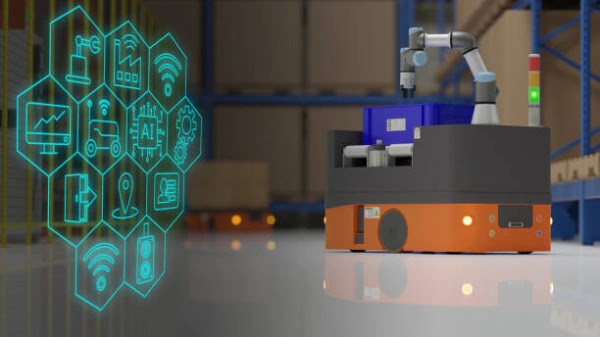Featured
- Get link
- X
- Other Apps
Corrosion Resistance in Iron Rods

Methods and Coatings for Prolonged Lifespan in Various Applications
Introduction
Corrosion is a pervasive and costly issue in various
industries, particularly in construction, infrastructure, and manufacturing,
where iron rods are frequently used. Iron rods are vulnerable to corrosion due
to their exposure to environmental factors like moisture, oxygen, and
aggressive chemicals. The degradation of iron rods not only compromises
structural integrity but also poses safety risks. To address this concern,
extensive research has been dedicated to developing methods and coatings to
enhance the corrosion resistance of iron rods. This article explores these
innovative solutions aimed at extending the lifespan of iron rods in various
applications.
Corrosion in Iron Rods
Corrosion of iron rods occurs primarily due to a chemical
reaction between the iron and its surroundings. When iron reacts with oxygen
and moisture, it forms iron oxide, commonly known as rust. Rust is porous and
weak, leading to the gradual deterioration of iron rods. The environmental
factors that contribute to corrosion include:
- Moisture:
Water is a primary catalyst for the corrosion of iron rods. High humidity,
rain, and exposure to water in various applications facilitate this
process.
- Oxygen:
The presence of oxygen in the atmosphere allows for the formation of iron
oxide.
- Salts
and Acids: Exposure to salts and acids, such as those found in coastal
areas or chemical processing plants, can exacerbate corrosion.
- Temperature
Fluctuations: Rapid temperature changes and extreme weather conditions
can accelerate the corrosion process.
Methods to Enhance Corrosion Resistance
Several methods have been developed to improve the corrosion
resistance of iron rods, extending their lifespan in diverse applications.
These methods can be broadly categorized as follows:
- Material
Selection: Choosing corrosion-resistant materials is fundamental to
combating rust. Stainless steel and corrosion-resistant alloys, like
duplex stainless steel, are excellent alternatives to traditional iron
rods.
- Coatings:
The application of protective coatings is one of the most effective ways
to enhance corrosion resistance. Various coating technologies have been
developed to safeguard iron rods against environmental exposure.
- Galvanization:
This process involves coating iron rods with a layer of zinc, which acts
as a sacrificial anode. The zinc corrodes before the iron, providing
long-lasting protection.
- Corrosion
Inhibitors: Chemical corrosion inhibitors can be added to concrete or
used as coatings to reduce the rate of corrosion. These inhibitors work by
forming a protective film on the surface of the iron rod.
- Cathodic
Protection: This technique uses a direct electrical current to prevent
the corrosion of iron rods. It is particularly useful in buried or
submerged applications.
Coatings for Corrosion Resistance
Coatings are a widely adopted and effective solution to
enhance the corrosion resistance of iron rods. They provide a protective
barrier between the iron and its corrosive environment. Several coating
technologies have been developed to suit various applications:
- Epoxy
Coatings: Epoxy coatings are applied to iron rods in a liquid or
powder form and then cured to form a hard, protective layer. These
coatings are highly resistant to moisture, chemicals, and abrasion. They
are commonly used in the construction of reinforced concrete structures
where iron rods are embedded.
- Zinc
Coatings: Zinc coatings can be applied through various methods, such
as hot-dip galvanization or electroplating. Zinc serves as a sacrificial
anode, corroding in place of the iron. This is a highly effective method
for iron rods used in outdoor and marine environments.
- Polyurethane
Coatings: Polyurethane coatings are known for their excellent
adhesion, flexibility, and resistance to chemicals and abrasion. They are
often used in industrial applications where iron rods are exposed to
aggressive chemicals.
- Ceramic
Coatings: Ceramic coatings offer outstanding corrosion resistance and
durability. They are applied as a thin layer on the iron rod's surface and
provide protection against moisture and chemicals.
- Thermal
Spray Coatings: Thermal spray coatings involve the application of
metal or ceramic coatings through a high-velocity flame or plasma. These
coatings offer excellent corrosion resistance and are suitable for
demanding industrial environments.
- Organic
Coatings: Organic coatings, such as paint or powder coatings, provide
a protective layer on the iron rod's surface. While they may not be as
durable as some other coatings, they are cost-effective and serve well in
less aggressive environments.
Application-Specific Coatings
The choice of coating should be tailored to the specific
application and environmental conditions. For example:
- Marine
Environments: Iron rods used in marine applications require high
corrosion resistance due to exposure to saltwater. Hot-dip galvanization
or stainless steel materials are often preferred.
- Infrastructure
Construction: Epoxy coatings are commonly used in reinforced concrete
structures like bridges and buildings. These coatings protect iron rods
from moisture penetration and chemical exposure.
- Industrial
Facilities: In chemical processing plants or factories, where iron
rods are exposed to corrosive chemicals, polyurethane or ceramic coatings
are suitable options.
- Oil
and Gas Industry: In offshore and onshore drilling applications, where
iron rods are exposed to extreme conditions, thermal spray coatings are
often employed.
Maintenance and Inspection
Even with the best coatings and corrosion-resistant materials, regular maintenance and inspection are essential to ensure the long-term performance of iron rods. Over time, coatings may wear down or sustain damage, exposing the iron to potential corrosion. Periodic inspections and recoating when necessary help maintain the integrity of the protective layer.
Conclusion
Corrosion resistance in iron rods is a critical concern for
a wide range of industries. The methods and coatings discussed in this article
provide effective solutions for prolonging the lifespan of iron rods in various
applications. As industries continue to evolve and innovate, so do the methods
and coatings available to protect iron rods against the corrosive forces of
nature and chemicals. The choice of the most suitable corrosion resistance
solution should be based on the specific application, environmental conditions,
and durability requirements to ensure the long-term integrity and safety of
structures and equipment.
- Get link
- X
- Other Apps

